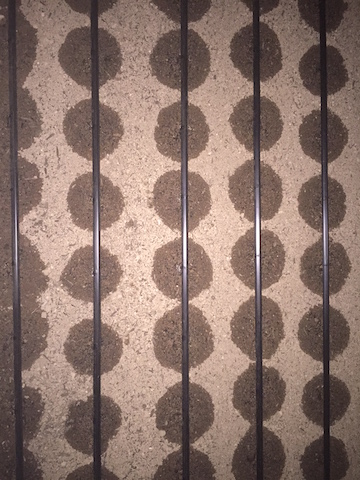Wow, that was a quick month! October here we come.
The grasshopper population is still increasing and now they are chewing on just about everything. The last week we cleared quite a few of the weeds in the east terrace and thereby eliminated a lot of hopper habitat, so many of them moved to the squash and into the high tunnel. We should be able to get them under control this following week as we eliminate most of the rest of the weeds and use neem oil derivatives to slow down their reproduction and development.
Removing the weeds has also opened up beds for planting, so we have been applying compost, preparing the beds and doing some direct seeding. The spinach is in and yesterday I planted another bed of greens mix.
We had a few mornings in the 40s and one in the high 30s over the last week. These cool morning temperatures really slowed down the ripening of the tomatoes. In just a few weeks, the weekly harvest plummeted from about 400 pounds down to less than 100. There are still many green tomatoes on the vines, so we will have them for awhile. Once we get the new cover on the high tunnel, the tomatoes (along with the sweet peppers and chiles) will have a warmer environment in which to grow.
As we have been mentioning the last few weeks, we will be selling CSA shares for our fall & winter CSA season that will start on November 12 and continue until mid-March. The fall & winter CSA program is now about 1/3 subscribed. The forms will be available at the Sunday market, and in the CSA box on the right sidebar of this website,
We will see you at the market!










